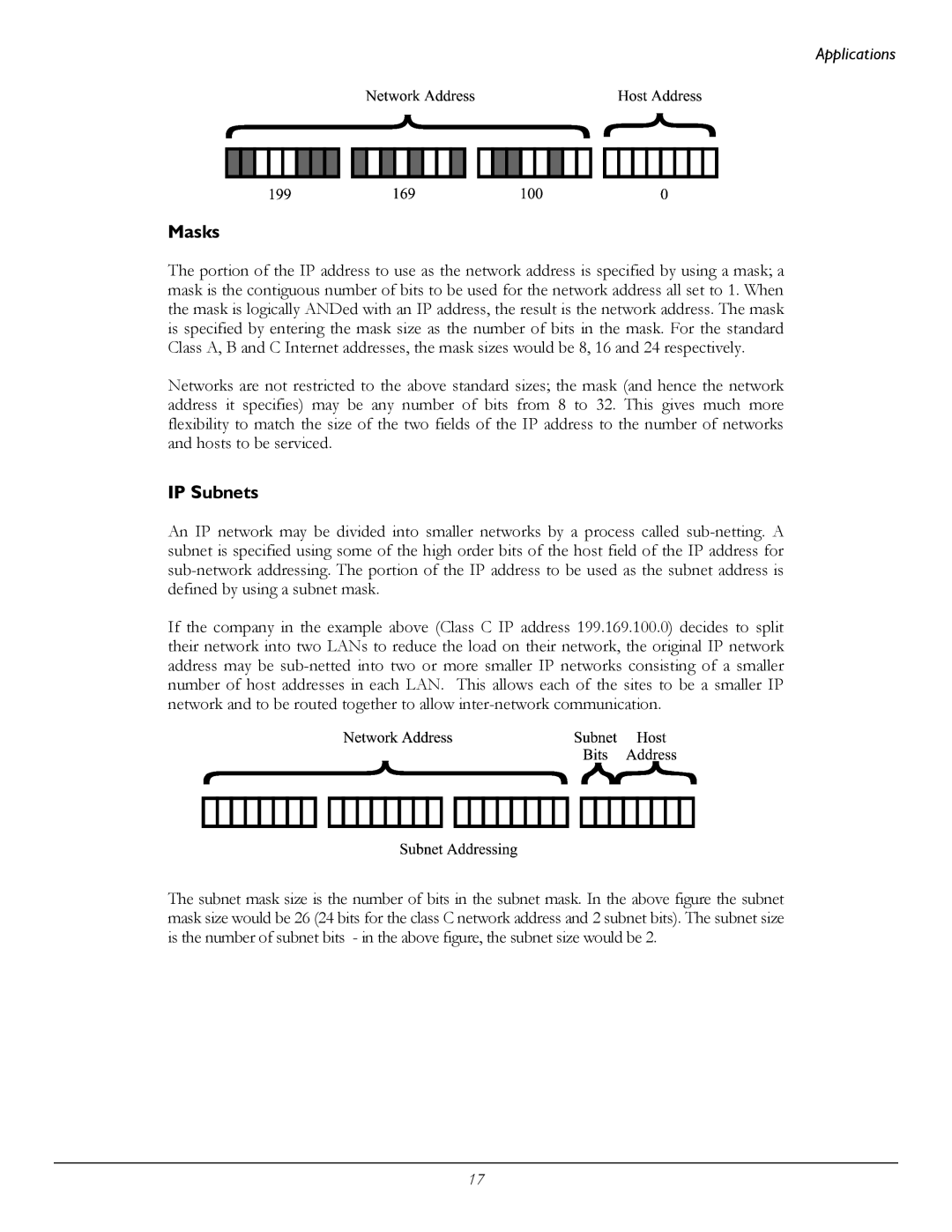
Applications
Masks
The portion of the IP address to use as the network address is specified by using a mask; a mask is the contiguous number of bits to be used for the network address all set to 1. When the mask is logically ANDed with an IP address, the result is the network address. The mask is specified by entering the mask size as the number of bits in the mask. For the standard Class A, B and C Internet addresses, the mask sizes would be 8, 16 and 24 respectively.
Networks are not restricted to the above standard sizes; the mask (and hence the network address it specifies) may be any number of bits from 8 to 32. This gives much more flexibility to match the size of the two fields of the IP address to the number of networks and hosts to be serviced.
IP Subnets
An IP network may be divided into smaller networks by a process called
If the company in the example above (Class C IP address 199.169.100.0) decides to split their network into two LANs to reduce the load on their network, the original IP network address may be
The subnet mask size is the number of bits in the subnet mask. In the above figure the subnet mask size would be 26 (24 bits for the class C network address and 2 subnet bits). The subnet size is the number of subnet bits - in the above figure, the subnet size would be 2.
17
